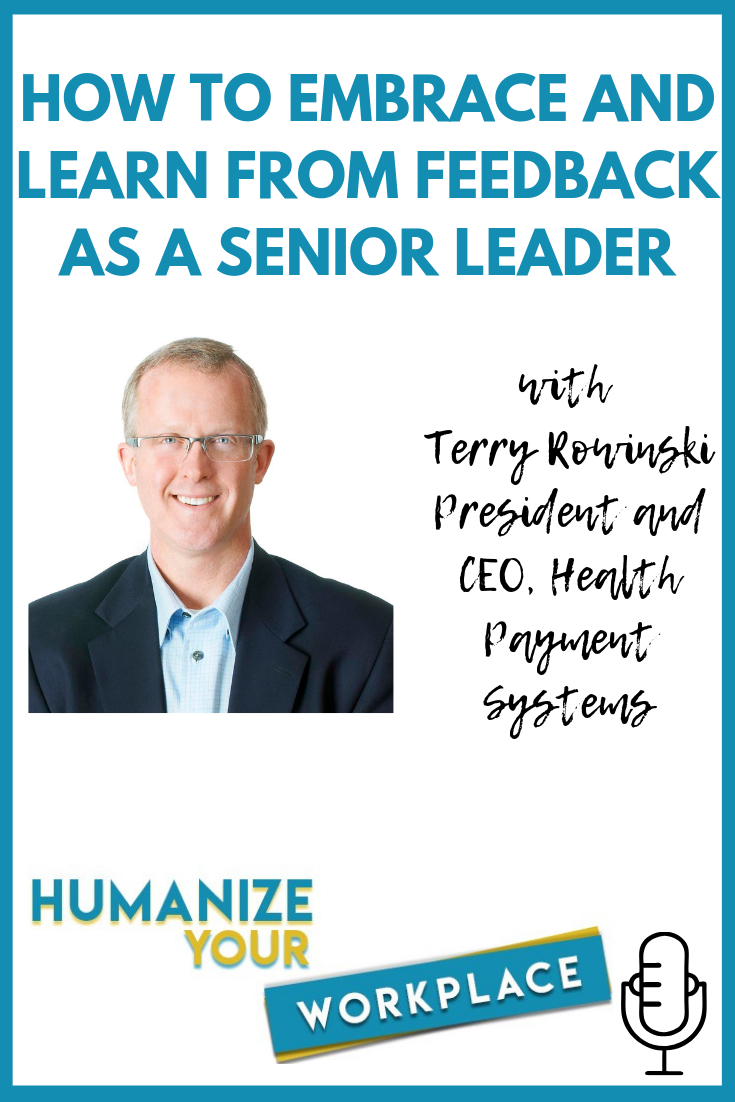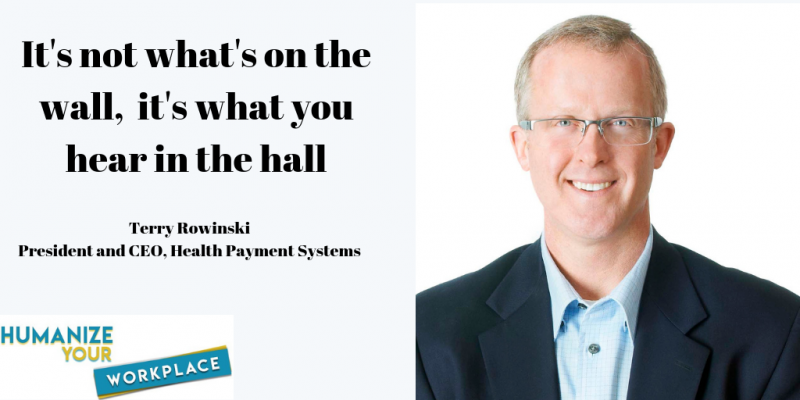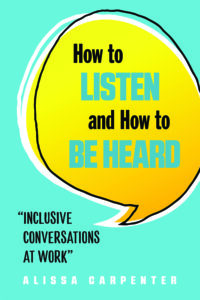-
Embracing and learning from feedback
-
Employee and vendor recognition programs
-
Creating core values
-
How to better understand and serve your client’s pain points
To listen to this week’s episode, head over to Google Podcasts, Spotify, Apple Podcasts, or Stitcher, check it out below.
Can you share with us some interesting stories or experiences that you had throughout your leadership tenure?
There is one specific instance that really helped mold me to the individual that I am today. In one of my former roles, I was very directive, and I didn’t realize how directive I was in terms of running the company. It was to the point where I was taking decision-making away from folks.
One day I was walking to my office and passed part of our finance team. Out of the corner of my eye I saw a “WWTD” sticker and looked closely to see it said, “What Would Terry Do?”
This caused some dry sweats and a little bit of a heart palpitation moment. It really hit me that I was overly managing of my folks.
From that point I really looked for additional attention from others to help me understand how to become a better leader. I reached out to to one of my past bosses / mentors at one of my past organizations and said “John, you’re never going to believe what ended up happening.” And as I told him the story he is like, “Well you know we kind of helped raise you that way but we didn’t quite polish off the rest of what you need to do to get accomplished so here’s my advice…”
And I went back to my organization after a few days and started to unwind the overall authoritarian Terry regime and management style and really start to impart that decision-making and accountability into my people.
This doesn’t seem like something you rolled out overnight. Can you tell us a little bit about your process?
If I would have come around in a knee-jerk way, I think it would have ended up being worse. People would have seen that as disingenuous. It took about 45 to 90 days for me to make that pivot and that transition. I adjusted simple things like running stand-up meetings to the complex things as to how we actually made decisions as a part of strategic planning for the company.
I know if I was that person who made that sign and then then you saw it, I would be embarrassed. How did you handle it?
Given the way in which I stumbled upon it, she was not present in her cube. I never actually directly confronted that person about it. As life went on in the organization and a couple years later, I think she knew that she was part of the impetus of the change without me directly having to say that.
What projects are you working on right now?
My company is humanizing the entire way in which people are consuming and paying for health care. Part of what we’ve done for 2019 has gone back to basics and living in the eyes and the shoes of our customers end to end in terms of what happens in the health care experience.
We’ve elevated a couple individuals to take on leadership roles and be that product owner of our customer experience. We’re seeing some fantastic ideas come out. There are also some things that I’m not ashamed to say, “Oh my gosh, we did that to the customer.” It is good for us to learn and help our customer experience to get better.
How are you finding the information to see if you are part of the problem that you’re trying to solve a problem?
That’s a great question. We’re using both objective and subjective data. We’re measuring traditional metrics of how you serve the customer from call center statistics to repeat calls and customer satisfaction ratings or Net Promoter scores.
But we’re also doing things like actually going out and randomly calling people to see what they think. We visit our customers which we do normally, but with a different bent. We’re making it less transactional and more relationship based.
We’re getting huge accolades for just talking to them as if they’re our friends and not a customer. One of the folks that we had just talked to this week said, “I’m really glad to see this new side of HPS in the marketplace. It’s going to do great things for you all in the future and it makes us more comfortable having you a part of our team.”
Can you tell us a little bit about the employee and vendor recognition you have?
We launched the Hearts Program and the HPS Excellence Award to recognize top service. Then we also created something called the Ace of Hearts. It is a physical recognition and embodiment of people that are truly living out what we call our “operating code” and our “statement of values.”
We crafted our values of the company this past year after taking in our first round of public private equity money to really have the company itself say, “OK, here’s what’s important to us in terms of how we work together, how we look for new individuals to join our team.” Then we take that outside the organization and say, “Here’s what’s important to us in terms of those that we work with in the marketplace.”
The alignment around that from a values perspective is causing us to have some interesting conversations about what we say and what we do and who we are. But then internally when somebody just really is living out those values, we recognize them from a peer perspective.
Somebody could recognize me, and it’s happened which has really been kind of fun. It’s not just the management people recognizing the rest of the company; it’s individuals within the company recognizing their peers or somebody in a totally different department.
The Ace of Hearts is given when someone goes above and beyond. It’s an 8.5×11 playing card that people can hang in their cubes or put on the wall. We’ve given this to outside vendors along with employees.
I love that you’re bringing in outside vendors because when we have recognition programs it’s usually within our organization. But to be able to recognize vendors can hopefully spread more kindness and business for them.
Totally. We’re a company of about 50, so we are that little train that’s put in health care that’s just trying to push change everywhere that we can.
And as an individual, you usually don’t call up and recognize somebody for something good. You’re usually calling up to complain. So, taking the time to recognize others outside our organization for something extraordinary humanizes us.
You mentioned a lot about values. Can you talk a little bit about how your values were created and who created them?
When the company was started, we probably made it too corporate in terms of what’s going on and almost to legalize even in terms of what took place. So, last year when we had taken in our first round of public equity, we took an opportunity to use it as kind of a relaunch of the company.
We got in front of the team and said we’re going to do this team wide activity. So, all 50 plus employees have an opportunity to help us redefine who we are and what’s a value to us.
And we came up with a single piece of paper with four graphics and four sentences and then some additional verbiage behind it that just says, this is who we are, this is what we believe in, and this is what we breathe each and every day.
The important part about that is that we have it and it’s hanging around the office and we made cards for everybody so that they could have it with them. We also put it on our corporate website.
The biggest thing is it’s not, “What’s on the wall, it’s what you really hear in the hall.” We started to really push ourselves forward culturally and values wide in terms of what we’re doing.
You’ve obviously changed a lot with your management style and gone from what some would call a micro manager to a successful leader. If you only have 15 minutes a day to get to know the people in your organization, how would you spend that time?
It is important to be visible frequently by walking around and engaging with one another. At first because I’ve been in senior administrative and operational roles, people thought I was walking around to find something. But I was actually just stopping by and talking with folks about personal aspects of what’s going on.
I ask, “what are you proud of,” “how is your family” and just some really soft open-ended questions remove inhibition of the person on the other side of the conversation and allows them to really have a just open and frank conversation.
You wouldn’t believe how many folks frankly just open up that are proud of something they did or bring up a concern that might be something that you can actually help them with.
I started this when I was with an organization that had a couple thousand seasonal workers. We had stand-ups at the beginning of a shift of operations and I asked for permission, but I could bring some cool stuff forward to help people remember why they’re here and they weren’t here for the company they were here because somebody outside the company loved them more than we did.
I think it helped morale and helped workplace safety because people cared more about one another because they started to be human with one another versus just competing at a job for a better pay rate or something from that perspective.
- Cultivating Relationships - July 20, 2021
- Empowering Our People - July 13, 2021
- Finding Purpose - July 6, 2021





